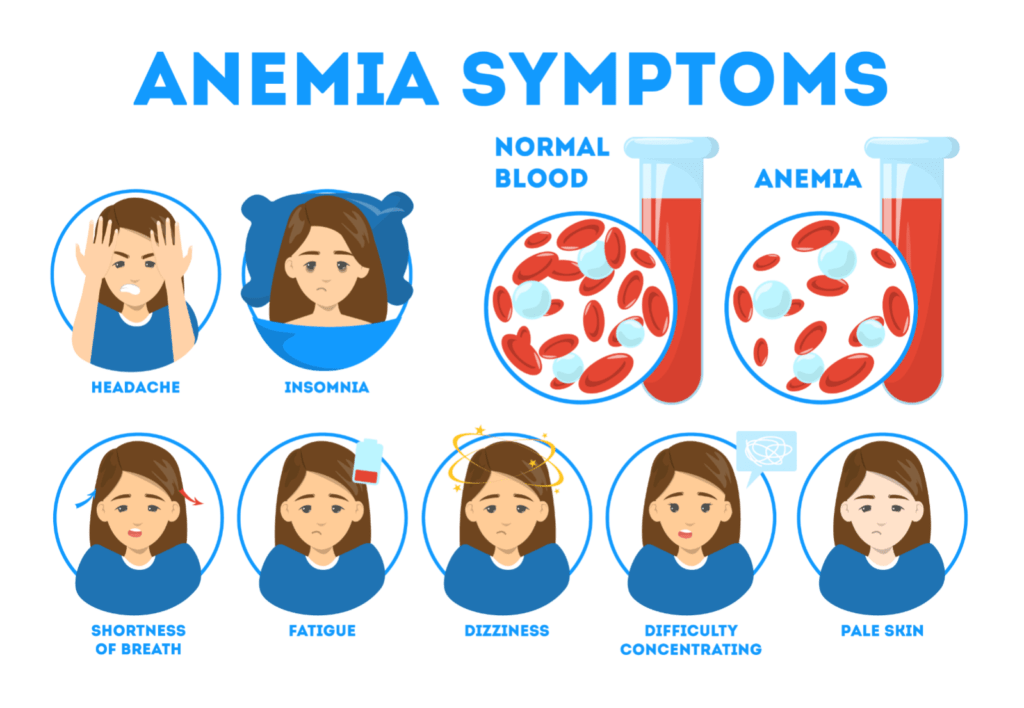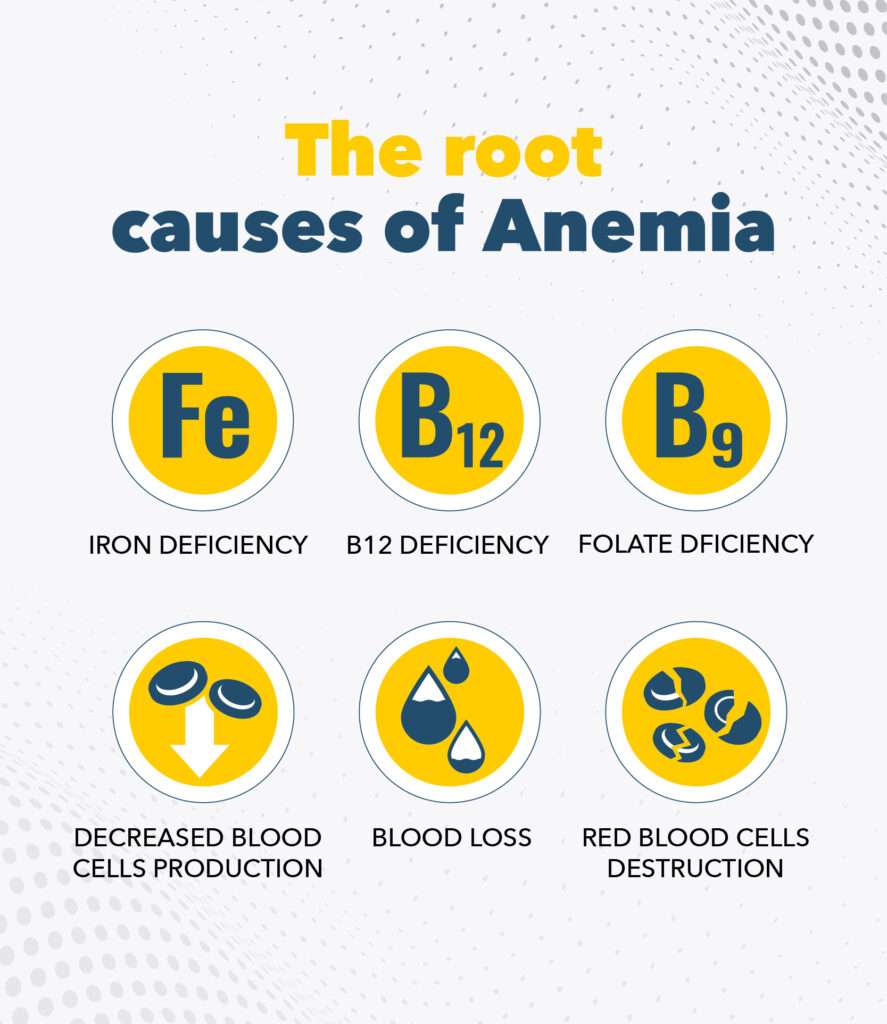Anemia: Symptoms, Causes & Treatment
Anemia:
Anemia is a medical condition characterized by a decrease in the number of red blood cells or a decrease in the amount of hemoglobin in the blood. Hemoglobin is the protein in red blood cells responsible for carrying oxygen from the lungs to other tissues and organs in the body. Anemia can result in reduced oxygen supply to the body’s cells, leading to various symptoms and health issues.
Symptoms of anemia:

- Fatigue and weakness: Due to reduced oxygen delivery to the body’s tissues and muscles.
- Pale skin: The decreased number of red blood cells can make the skin appear paler than usual.
- Shortness of breath: Especially during physical activity or exertion.
- Dizziness or lightheadedness: Caused by inadequate oxygen supply to the brain.
- Cold hands and feet: A result of decreased blood flow to the extremities.
- Headache: Often due to the brain not receiving enough oxygen.
- Irregular heartbeat: In severe cases, the heart may compensate by beating irregularly or more rapidly.
Causes of anemia:

There are several different types and causes of anemia, some of the common ones include:
- Iron-deficiency anemia: Insufficient iron intake or absorption, often caused by a poor diet, blood loss (e.g., from gastrointestinal bleeding or menstruation), or pregnancy.
- Vitamin deficiency anemia: Lack of essential vitamins like vitamin B12 or folate, which are necessary for red blood cell production.
- Hemolytic anemia: A condition where red blood cells are destroyed faster than they can be produced, often due to inherited conditions or autoimmune disorders.
- Aplastic anemia: A rare condition where the bone marrow doesn’t produce enough red blood cells, white blood cells, and platelets.
- Chronic diseases: Certain chronic illnesses, such as kidney disease or inflammatory disorders, can interfere with red blood cell production or lead to their destruction.
- Hemorrhagic anemia: Caused by acute blood loss due to injury, surgery, or other medical conditions.
- Hemoglobinopathies: Inherited disorders affecting the structure or production of hemoglobin, such as sickle cell disease or thalassemia.
Treatment of anemia:

The treatment for anemia depends on the underlying cause and severity of the condition. Some common approaches include:
- Iron supplements: For iron-deficiency anemia, doctors may prescribe iron supplements or recommend iron-rich foods to increase iron levels.
- Vitamin supplements: Vitamin B12 or folate supplements may be prescribed for certain types of anemia.
- Blood transfusions: In severe cases or acute blood loss, a blood transfusion may be necessary to quickly restore red blood cell levels.
- Erythropoiesis-stimulating agents (ESAs): These medications can stimulate the bone marrow to produce more red blood cells and are used in specific cases of anemia.
- Treating underlying conditions: Addressing the root cause of anemia, such as managing chronic diseases or stopping ongoing bleeding.
- Dietary changes: Encouraging a diet rich in iron, vitamin B12, and folate can help prevent certain types of anemia.
- Bone marrow transplant: In severe cases of aplastic anemia or some inherited disorders, a bone marrow transplant may be considered.
It’s essential to consult a healthcare professional for proper diagnosis and appropriate treatment if you suspect you or someone you know may have anemia. They can conduct blood tests and determine the best course of action based on the individual’s specific condition




